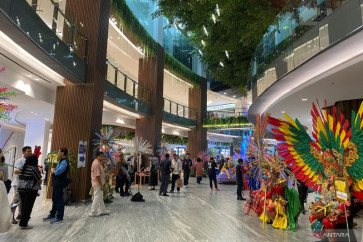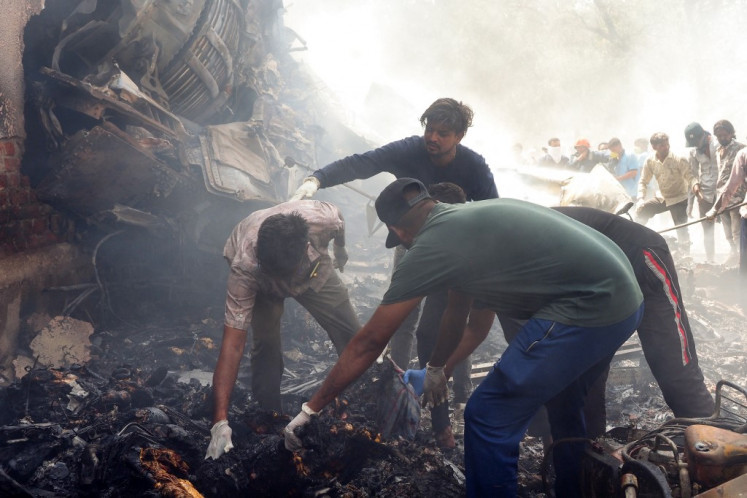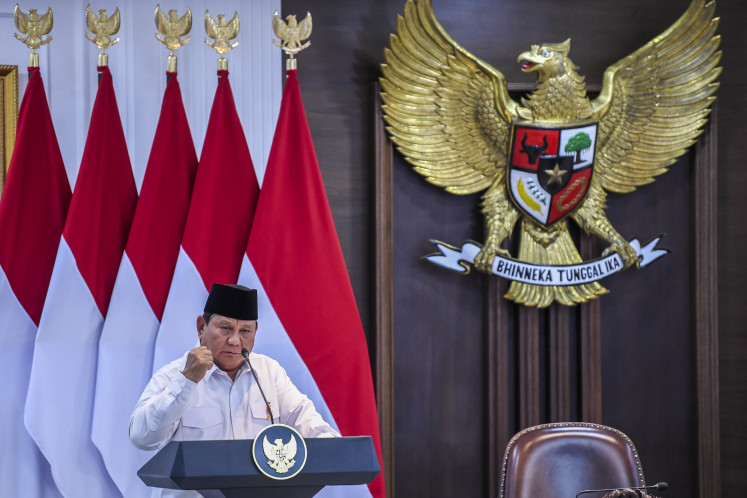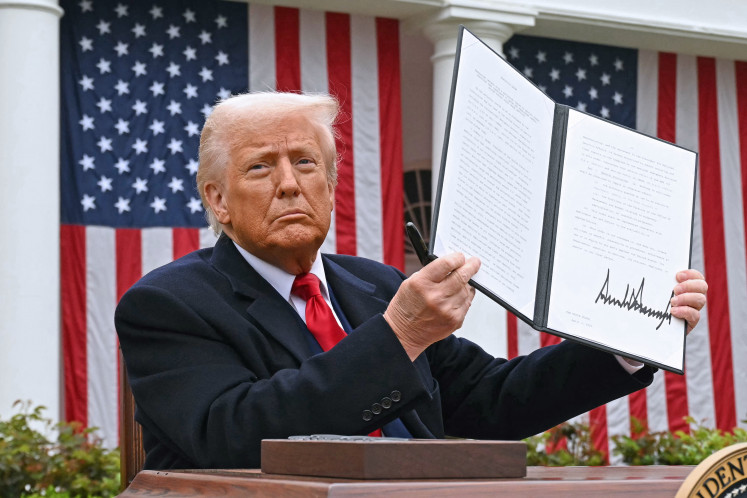AMM/PMC as seen from the newsroom
The high attendance of foreign ministers was an implicit recognition of Indonesia’s strategic role as the current chair of ASEAN.
Change text size
Gift Premium Articles
to Anyone

J
akarta that week was somewhat gloomy. The sun, at times, shied away from embracing the Jakartans and dignitaries for the 56th ASEAN Foreign Ministers and Post-Ministerial Conferences (AMM/PMC) with its warmth.
The rather somber atmosphere ran counter to the enthusiasm shown by the delegations partaking in the conferences and other related meetings held from July 11 to 14.
More than 1,000 delegates from 31 countries plus the European Union assembled in Jakarta and around 500 journalists reported the activities live from the meeting venue.
The fact that some foreign ministers from dialogue partners flew out to Jakarta immediately after the NATO meeting in Vilnius demonstrates their strong desire to be a part of the dialogues within the ASEAN platform.
China for its part was represented by Wang Yi, director of the Foreign Affairs Commission of the Chinese Communist Party and former foreign minister. Within the People’s Republic of China political setting, Wang Yi is higher up than the foreign minister.
All things considered, such enthusiasm confirms that ASEAN matters and ASEAN continues to attract interest among countries within and beyond the region. The high attendance of foreign ministers was also an implicit recognition of Indonesia’s strategic role as the current chair of ASEAN.
The ASEAN Foreign Ministers’ Meeting along with a series of subsequent meetings, including various bilateral meetings serve as an avenue for participating countries to discuss issues of common concern.
Such a platform provides an opportunity for broad-based discussions, as there are always issues requiring all stakeholders, or as many parties as possible, to participate. This is especially so when there is less eagerness to meet, prompted by a lack of trust.
Trust is indeed a hard currency in today’s relations among nations. Yet, Jakarta provided avenues for participating heads of delegations to involve in bilateral meetings, including between United States Secretary of State Antony Blinken and Wang Yi.
This sentiment was echoed by Wang Wenbin, spokesperson for China’s Foreign Ministry, who mentioned prior to the AMM/PMC that meetings in Jakarta serve as a “platform to enhance mutual trust and cooperation”.
As had been anticipated, the ongoing debacle in Myanmar and the progress of discussions on the Code of Conduct in the South China Sea seized the highest attention among pundits and the media.
It is somewhat unfortunate that the plethora of other issues discussed by the foreign ministers over the course of the three days and the symbolism of the gathering itself has yet to be fully explored in their reportages.
An example of this that ended up being mentioned only in the margins of the news reports was ASEAN’s commitment to strengthening food security and nutrition, in response to any crisis. Another that comes to mind is the shared commitment to ensuring the region continues to function as an epicenter of growth.
Similarly, ASEAN's commitment to a resilient region that can withstand current and future challenges, including the impact of climate change on food security, was not fully exposed.
Apparently, the novelty of many topics discussed in Jakarta was not always in sync with the focus and interests of the media.
While sitting in the media center and mingling with the journalists, I was further convinced that their angles of reporting were already pegged on some issues mentioned earlier. With an inclination to prod only specific issues.
Media representing Western countries focused more on the issues of China and the South China Sea disputes, Myanmar, the tension between the US and China and the conflict in Ukraine.
Southeast Asian media also paid close attention to the issue of Myanmar, while media from the Eastern Asian region had different topics on their radar. Such as North Korea’s nuclear threat and treated water from the nuclear facility in Fukushima.
Of course, there were moments that were rather anecdotal but to my surprise newsworthy. Such as when journalists were speculating on what short messages were conveyed by foreign ministers as they shook hands with President Joko “Jokowi” Widodo.
What emerged was that any appearance of affinity between any particular foreign minister and President Jokowi was translated as representing good bilateral rapport between states.
In all due fairness to colleagues from the media, there were moments when they struggled to find resource persons on certain issues. Progress in Indonesia’s informal peace efforts in Myanmar was one of the most sought-after pieces of information.
Unfortunately, the progress of the peace process is not a subject that third parties are willing to share with the public, especially while the initiatives are still ongoing. Then again, there are no quick fixes for deep-rooted conflicts, such as in Myanmar.
In the interest of bridging the gap of the unknown, at the margin of the AMM/PMC meetings I managed to arrange a background meeting between Ambassador Ngurah Swajaya, Foreign Minister Retno’s confidant on Myanmar’s issue, with a throng of journalists.
IAt the end, I was informed by participants that the prolific discussions they had with the resource person had helped them in putting together a news report.
Hence, they were more aware of the context of Indonesia’s efforts as ASEAN chair to find a breakthrough in Myanmar’s debacle and also the roles played by Minister Retno who leads the office of the ASEAN special envoy.
At the end of the day, with Indonesia’s chairmanship in ASEAN approaching its end in early September, I would have hoped that media reporting from the newsroom could have looked at the chairmanship in its totality.
***
The writer is Information and Public Diplomacy director general at the Indonesian Foreign Ministry and former Indonesian ambassador to Canada. The views expressed are his own.









